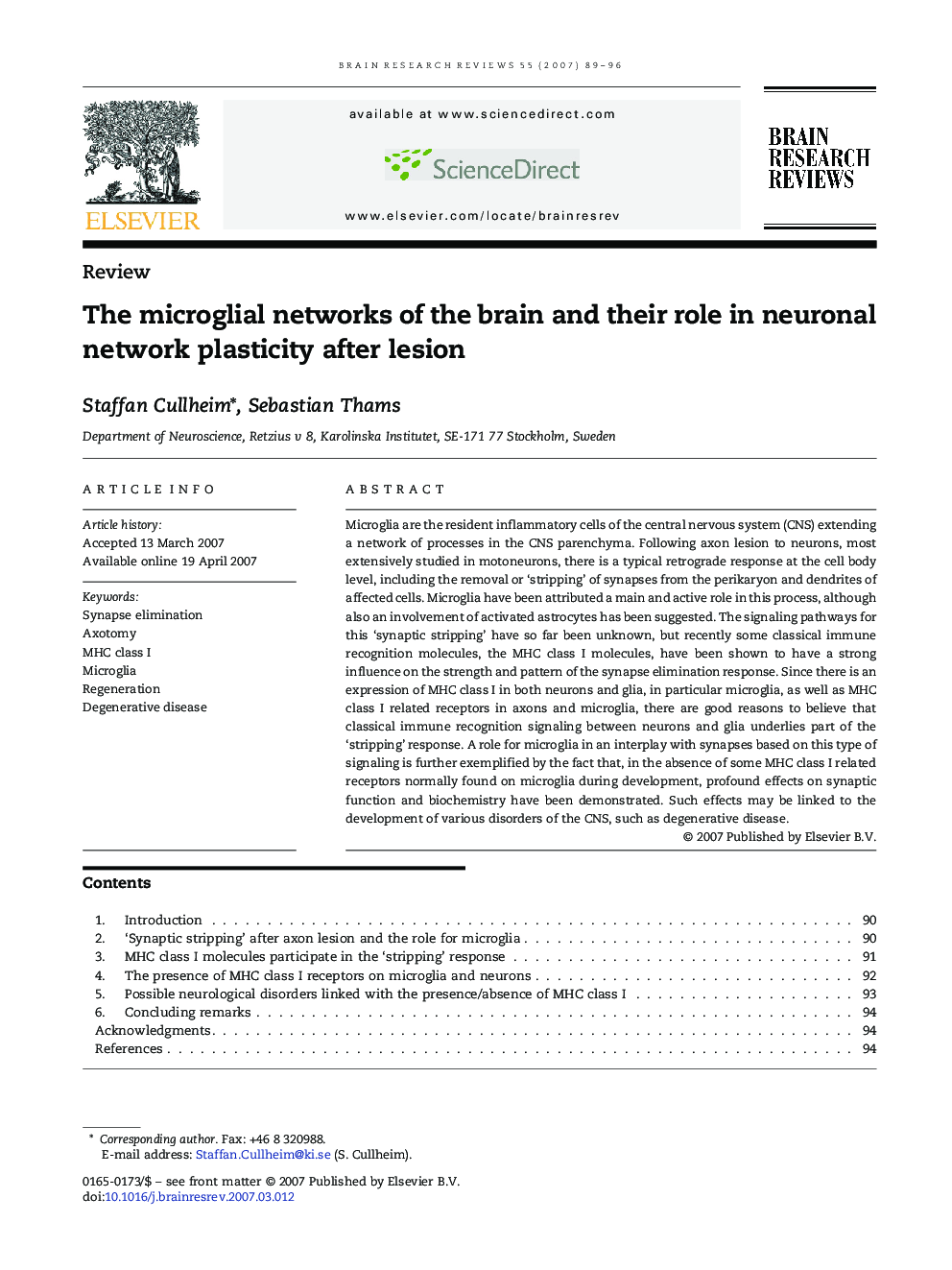| Article ID | Journal | Published Year | Pages | File Type |
|---|---|---|---|---|
| 4334065 | Brain Research Reviews | 2007 | 8 Pages |
Microglia are the resident inflammatory cells of the central nervous system (CNS) extending a network of processes in the CNS parenchyma. Following axon lesion to neurons, most extensively studied in motoneurons, there is a typical retrograde response at the cell body level, including the removal or ‘stripping’ of synapses from the perikaryon and dendrites of affected cells. Microglia have been attributed a main and active role in this process, although also an involvement of activated astrocytes has been suggested. The signaling pathways for this ‘synaptic stripping’ have so far been unknown, but recently some classical immune recognition molecules, the MHC class I molecules, have been shown to have a strong influence on the strength and pattern of the synapse elimination response. Since there is an expression of MHC class I in both neurons and glia, in particular microglia, as well as MHC class I related receptors in axons and microglia, there are good reasons to believe that classical immune recognition signaling between neurons and glia underlies part of the ‘stripping’ response. A role for microglia in an interplay with synapses based on this type of signaling is further exemplified by the fact that, in the absence of some MHC class I related receptors normally found on microglia during development, profound effects on synaptic function and biochemistry have been demonstrated. Such effects may be linked to the development of various disorders of the CNS, such as degenerative disease.
